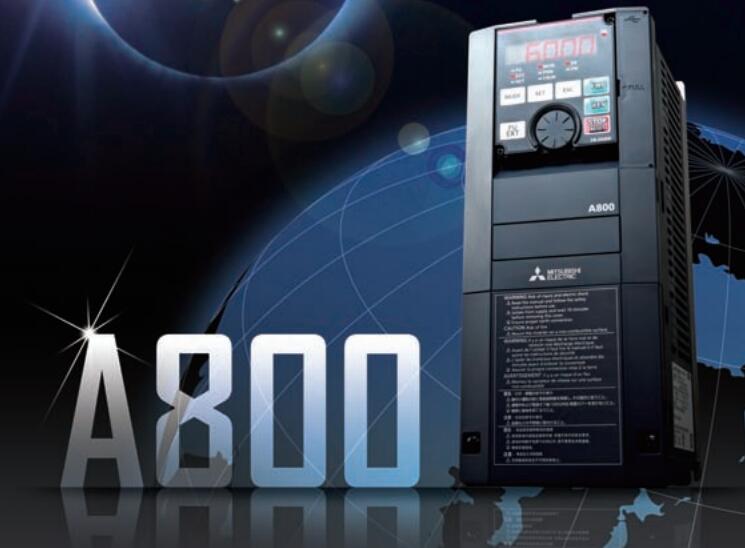Brand sort
MITSUBISHI MITSUBISHI FR-A846-00126-2-60 Price
Brand:
MITSUBISHI
Country: JAPAN
Name: IP55 converter built-in DC reactor
Model: FR-A846-00126-2-60
Price: 0
MITSUBISHI FR-A846-00126-2-60
Axis of control: 1.
Instruction speed: 1Hz~1MHz.
Applicable PLC:FX1N, FX2N, FX3U, FX2NC (to FX2NC-CNV-IF).
Applicable PLC:FX3UC (to FX2NC-CNV-IF or FX3UC-1PS-5V).
The maximum 1MHz high speed pulse, can carry on the high speed, high precision positioning.
Can be in the range of 1Hz to 1Hz~1MHz as the interval output pulse.
The high speed moving time can be shortened to 1ms by using a dedicated start input FR-A846-00126-2-60
Enhanced speed control function.
Support the approximate S type of acceleration and deceleration function, form operation function, through the maximum 30kHz of the external input pulse rate of synchronization operation, etc.. The length of the line: 0.3m.
The cable is not shielded.
Encoder with cable (motor side), for the HF-KP/HF-MP series (motor shaft with side extraction). Program capacity: 252 K step.
Input / output points: 4096 points.
Number of input and output elements: 8192.
Processing speed: 0.034 s.
Program memory capacity: 1008 KB.
Support USB and RS232.
Durable redundant CPU.
The position signal of the first axis servo amplifier, which is used on the motion CPU, is used as a trigger,
Starting from the programmable controller CPU to the second axis servo amplifier,
Time to output speed command of servo amplifier.
This time is the index of data transmission speed between CPU.Superior high efficiency IPM motor.
Output power: 22kw.
Rated speed: 1500r/min.
Voltage level: 200V.
IPM motor MM-EFS series can not be used to run the power frequency power.
The total wiring length of the IPM motor shall not exceed 100m.
1 inverters can not connect multiple IPM motors at the same time. MITSUBISHI inverter series: FR-F840.
Voltage level: three phase 400V.
Power: 1.5kw.
SLD converter rated current: 3.8A.
Structure and function: Standard model.
Type: CA.
Substrate coating: have.
2 times the power consumption of the wind turbine and pump and the speed of the 3 power consumption is proportional to the speed of the rotating speed.
Through the speed control of the frequency converter to adjust the air flow, can reduce the power consumption.
Give full play to the performance of the motor.
The excitation current is always adjusted to the best state, which can improve the efficiency of the motor.
Load torque is smaller, can further improve energy efficiency.
For example, when a general motor is used, the optimal excitation control mode in the 4% motor load torque is about 30% more than that of the V/F control.
FR-A846-00126-2-60 Operation manual / Instructions / Catalog download link: /searchDownload.html?Search=FR-A846-00126-2-60&select=5
Instruction speed: 1Hz~1MHz.
Applicable PLC:FX1N, FX2N, FX3U, FX2NC (to FX2NC-CNV-IF).
Applicable PLC:FX3UC (to FX2NC-CNV-IF or FX3UC-1PS-5V).
The maximum 1MHz high speed pulse, can carry on the high speed, high precision positioning.
Can be in the range of 1Hz to 1Hz~1MHz as the interval output pulse.
The high speed moving time can be shortened to 1ms by using a dedicated start input FR-A846-00126-2-60
Enhanced speed control function.
Support the approximate S type of acceleration and deceleration function, form operation function, through the maximum 30kHz of the external input pulse rate of synchronization operation, etc.. The length of the line: 0.3m.
The cable is not shielded.
Encoder with cable (motor side), for the HF-KP/HF-MP series (motor shaft with side extraction). Program capacity: 252 K step.
Input / output points: 4096 points.
Number of input and output elements: 8192.
Processing speed: 0.034 s.
Program memory capacity: 1008 KB.
Support USB and RS232.
Durable redundant CPU.
The position signal of the first axis servo amplifier, which is used on the motion CPU, is used as a trigger,
Starting from the programmable controller CPU to the second axis servo amplifier,
Time to output speed command of servo amplifier.
This time is the index of data transmission speed between CPU.Superior high efficiency IPM motor.
Output power: 22kw.
Rated speed: 1500r/min.
Voltage level: 200V.
IPM motor MM-EFS series can not be used to run the power frequency power.
The total wiring length of the IPM motor shall not exceed 100m.
1 inverters can not connect multiple IPM motors at the same time. MITSUBISHI inverter series: FR-F840.
Voltage level: three phase 400V.
Power: 1.5kw.
SLD converter rated current: 3.8A.
Structure and function: Standard model.
Type: CA.
Substrate coating: have.
2 times the power consumption of the wind turbine and pump and the speed of the 3 power consumption is proportional to the speed of the rotating speed.
Through the speed control of the frequency converter to adjust the air flow, can reduce the power consumption.
Give full play to the performance of the motor.
The excitation current is always adjusted to the best state, which can improve the efficiency of the motor.
Load torque is smaller, can further improve energy efficiency.
For example, when a general motor is used, the optimal excitation control mode in the 4% motor load torque is about 30% more than that of the V/F control.
FR-A846-00126-2-60 Operation manual / Instructions / Catalog download link: /searchDownload.html?Search=FR-A846-00126-2-60&select=5
...more relevant model market price >>>>
Related products
MITSUBISHI
IP55 converter built-in DC reactor
FR-A846-00052-2-60
"MITSUBISHI inverter series: FR-A846.
Vo
MITSUBISHI
IP55 converter built-in DC reactor
FR-A846-03250-2-60
"MITSUBISHI inverter series: FR-A846.
Vo
MITSUBISHI
IP55 converter built-in DC reactor
FR-A846-00126-2-60
"MITSUBISHI inverter series: FR-A846.
Vo
MITSUBISHI
IP55 converter built-in DC reactor
FR-A846-00470-2-60
"MITSUBISHI inverter series: FR-A846.
Vo
Related download


 next one:
next one:  Last one:
Last one: